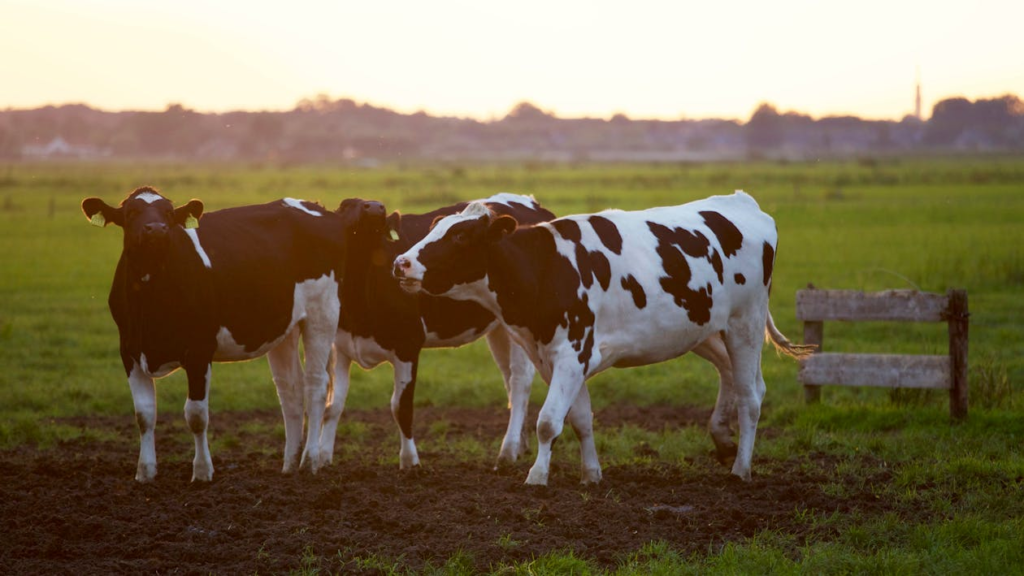
Researchers have developed a groundbreaking 17-plex STR (short tandem repeat) typing system that can accurately identify individual cattle and verify their parentage. This innovative tool contains all 16 STRs recommended by the International Society for Animal Genetics (ISAG), as well as a sex-determining marker, making it a comprehensive solution for cattle genetic research and breeding programs.
The new system simplifies the genotyping process, reducing the time required from 4.5 hours to just 1 hour and 37 minutes. Its high sensitivity allows complete genotyping from as little as 1 ng of DNA, and it demonstrates exceptional species-specificity, with no interference from closely related species like deer, sheep, and goats.
Analysis of 140 Liaoyu white cattle revealed 24 new alleles, highlighting the system’s ability to uncover previously undocumented genetic diversity. The combined probabilities of paternity exclusion (CPEduo and CPEtrio) were an impressive 0.999804697 and 0.999999260, respectively, making this 17-plex system a powerful tool for individual identification and parentage testing in cattle.
This breakthrough research not only advances the field of cattle genetics but also has broader implications for population studies, selective breeding, and even forensic applications. By providing a comprehensive, efficient, and highly accurate genotyping solution, this 17-plex STR system is set to revolutionize the way we understand and manage cattle populations worldwide. Short tandem repeat, Cattle, Genetics, Parentage testing
Revolutionizing Cattle Identification and Parentage Testing
Accurate identification of individual cattle and verification of their parentage is crucial for pedigree management, selective breeding, and genetic research. However, until now, no single multiplex system has been able to simultaneously detect all 16 STRs recommended by the International Society for Animal Genetics (ISAG) for these purposes. That is, until now.
Introducing the Groundbreaking 17-Plex STR System
Researchers from Shenyang Agricultural University in China have developed a cutting-edge 17-plex STR typing system that not only contains all 16 ISAG-recommended STRs but also includes a sex-determining marker, AMEL. This comprehensive system represents a significant advancement in cattle genetic analysis, offering a powerful tool for individual identification and parentage testing.
Streamlining the Genotyping Process
One of the key features of this new 17-plex system is its streamlined design. By replacing multiple reagents with a single Easy Taq PCR Supermix, the researchers were able to simplify the PCR procedure and shorten the overall genotyping time from 4.5 hours to just 1 hour and 37 minutes. This increased efficiency is a game-changer, making the system more accessible and practical for researchers and breeders alike.

Unparalleled Sensitivity and Specificity
The 17-plex system also boasts impressive sensitivity, capable of generating complete genotype profiles from as little as 1 ng of DNA. This low DNA requirement is a significant advantage, as it allows for the use of small or degraded samples, which are common in cattle genetic studies.
Moreover, the system demonstrates exceptional species-specificity, with no interference from the DNA of closely related species, such as deer, sheep, and goats. This ensures that the genotyping results are accurate and reliable, without the risk of false positives or cross-reactivity.
Uncovering Genetic Diversity in Cattle Populations
The researchers tested the 17-plex system on 140 Liaoyu white cattle, a breed that is a cross between Charolais and a local Chinese cattle breed. Their analysis revealed 24 new alleles across 10 of the STR loci, highlighting the system’s ability to uncover previously undocumented genetic diversity within cattle populations.

Fig. 1
Powerful Parentage Testing and Individual Identification
The 17-plex system’s performance in parentage testing and individual identification is truly remarkable. The combined probabilities of paternity exclusion (CPEduo and CPEtrio) were an impressive 0.999804697 and 0.999999260, respectively. These high values demonstrate the system’s exceptional accuracy in verifying parentage and distinguishing individual cattle.
Broader Implications and Future Directions
The development of this 17-plex STR system has far-reaching implications beyond just cattle genetics. Its versatility and efficiency make it a valuable tool for population studies, selective breeding programs, and even forensic investigations involving cattle.
Furthermore, the system’s flexibility allows researchers to easily modify the number of STR markers used, making it adaptable to different research needs and budgets. As sequencing technologies continue to advance, the integration of SNP (single nucleotide polymorphism) markers alongside STRs may further enhance the system’s capabilities in the future.
Revolutionizing Cattle Genetics and Beyond
The development of this 17-plex STR typing system represents a significant breakthrough in cattle genetics research. By providing a comprehensive, efficient, and highly accurate genotyping solution, this innovative tool is poised to transform the way we identify, manage, and study cattle populations worldwide.
As the scientific community continues to explore the genetic secrets of cattle, this 17-plex system will undoubtedly play a crucial role in unlocking new insights and driving advancements in the field of animal genetics and breeding.
Author credit: This article is based on research by Songyang Shang, Yutong Wang, Xiujuan Yu, Defu Zhang, Runhong Luo, Ri Jiang, Gang Zhao, Xuehai Du, Jupeng Zhang, David M. Irwin, Zhe Wang, Shuyi Zhang.
For More Related Articles Click Here
